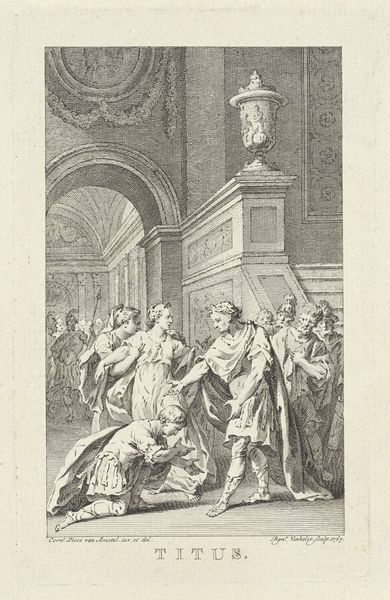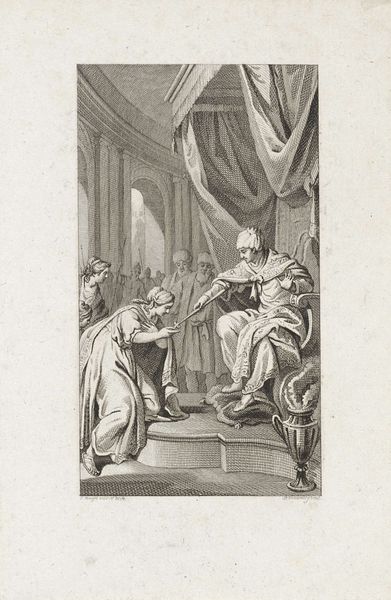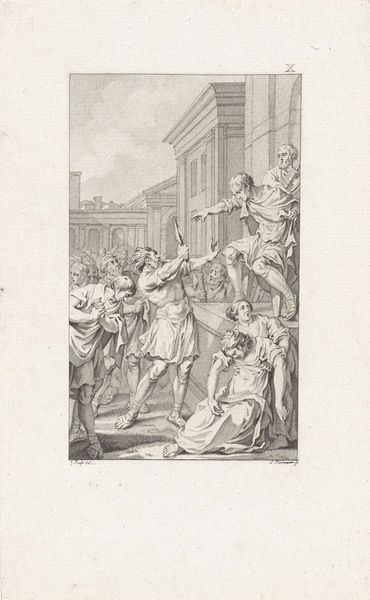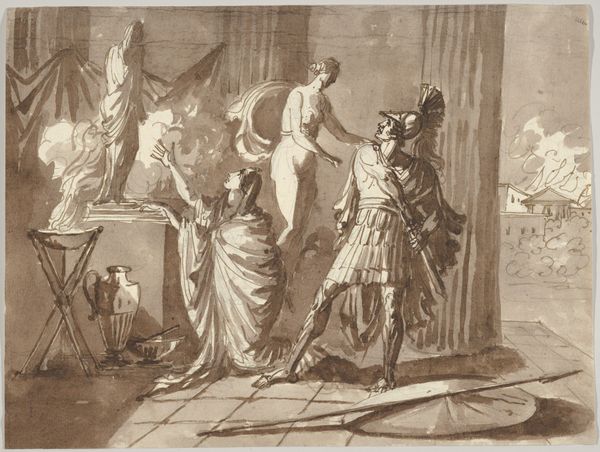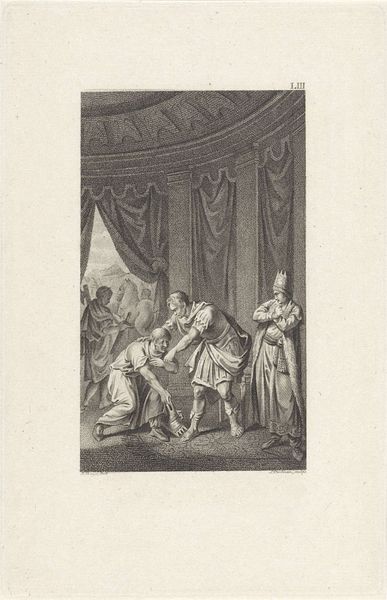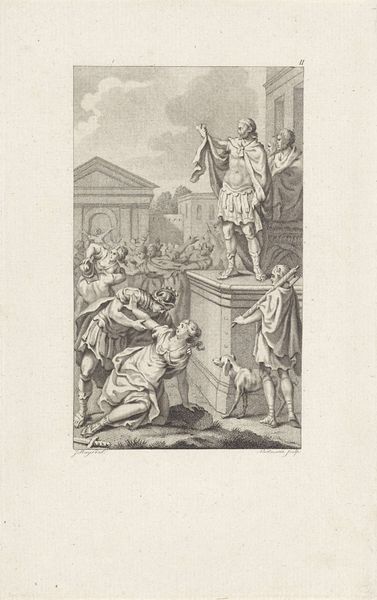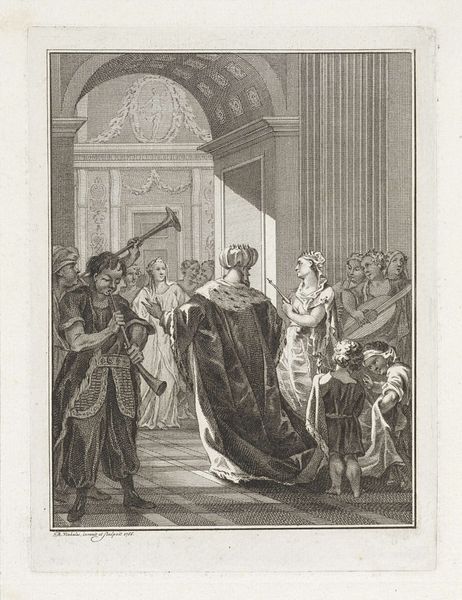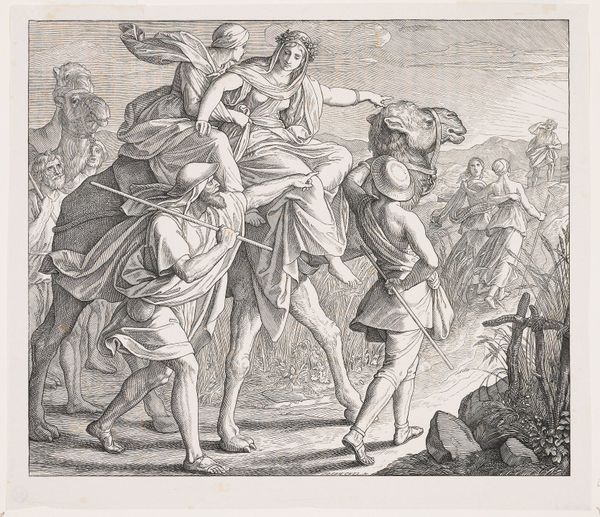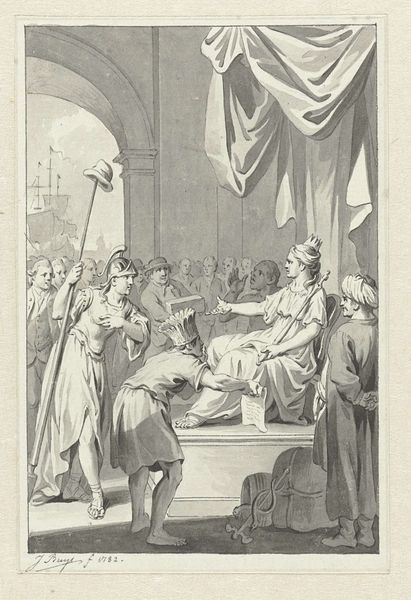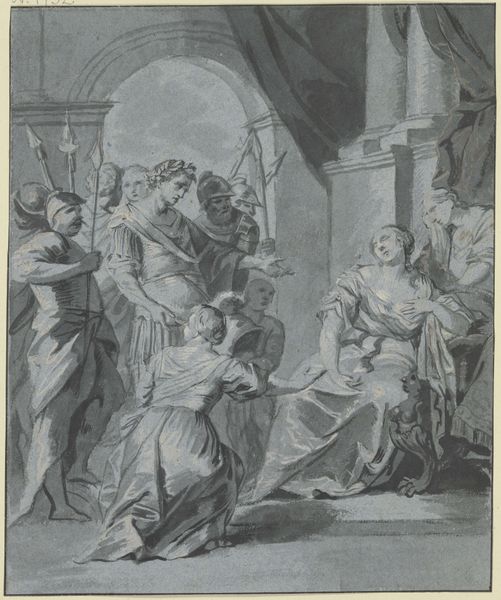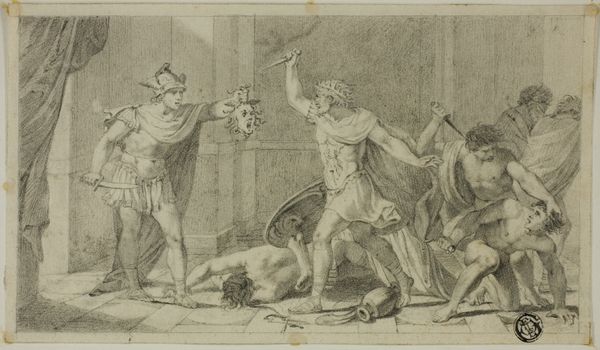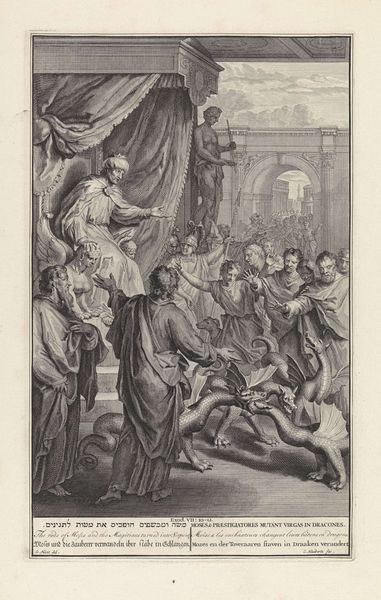
drawing, ink, pencil, engraving
#
drawing
#
neoclacissism
#
narrative-art
#
pen illustration
#
pencil sketch
#
old engraving style
#
classical-realism
#
figuration
#
ink
#
pen-ink sketch
#
pencil
#
history-painting
#
academic-art
#
engraving
Dimensions: height 135 mm, width 85 mm
Copyright: Rijks Museum: Open Domain
Editor: This is Reinier Vinkeles' "Keizer Diocletianus vermoordt Aper" from 1804, made with pencil, ink, and engraving. It feels so meticulously rendered. How should we read the piece through the lens of its materials? Curator: I see the very deliberate choice of engraving and drawing – reproductive technologies rooted in labor and circulation – used here to depict a scene of imperial power. Consider the social context of printmaking at this time. How did it democratize access to imagery? Editor: So, you're saying that the act of depicting imperial power through mass-reproducible methods challenges that power in some way? Curator: Exactly. The medium itself becomes part of the message. How does the relative affordability and accessibility of a print like this alter its reception compared to, say, a unique oil painting? Editor: I guess more people could have seen it. Did that level the playing field or influence how others were producing art? Curator: Precisely. This opens up crucial questions: Who had access to these images, and how did their circulation influence social and political consciousness? Was the intent to celebrate or critique? Think about the labour involved in creating an engraving – it is so precise. How is the skill of the artisan evident here? Editor: You're right. It feels different now thinking of how it was made and who might have seen it back then. It changes my initial impression quite a bit. Curator: Indeed, the means of production profoundly shape our understanding of the artwork's message and its impact on society. This reveals a very specific and political agenda tied to the era’s social mechanics. Editor: So cool! This makes me want to go check out who had access and compare other ways this narrative was shared. Thank you!
Comments
No comments
Be the first to comment and join the conversation on the ultimate creative platform.
